A comparison of particulate hexavalent chromium cytotoxicity and genotoxicity in human and leatherback sea turtle lung cells from a one environmental health perspective
- PMID: 31108106
- PMCID: PMC6602062
- DOI: 10.1016/j.taap.2019.05.013
A comparison of particulate hexavalent chromium cytotoxicity and genotoxicity in human and leatherback sea turtle lung cells from a one environmental health perspective
Abstract
Evaluating health risks of environmental contaminants can be better achieved by considering toxic impacts across species. Hexavalent chromium [Cr(VI)] is a marine pollutant and global environmental contaminant. While Cr(VI) has been identified as a human lung carcinogen, health effects in marine species are poorly understood. Little is known about how Cr(VI) might impact humans and marine species differently. This study used a One Environmental Health Approach to compare the cytotoxicity and genotoxicity of particulate Cr(VI) in human and leatherback sea turtle (Dermochelys coriacea) lung fibroblasts. Leatherbacks may experience prolonged exposures to environmental contaminants and provide insight to how environmental exposures affect health across species. Since humans and leatherbacks may experience prolonged exposure to Cr(VI), and prolonged Cr(VI) exposure leads to carcinogenesis in humans, in this study we considered both acute and prolonged exposures. We found particulate Cr(VI) induced cytotoxicity in leatherback cells comparable to human cell data supporting current research that shows Cr(VI) impacts health across species. To better understand mechanisms of Cr(VI) toxicity we assessed the genotoxic effects of particulate Cr(VI) in human and leatherback cells. Particulate Cr(VI) induced similar genotoxicity in both cell lines, however, human cells arrested at lower concentrations than leatherback cells. We also measured intracellular Cr ion concentrations and found after prolonged exposure human cells accumulated more Cr than leatherback cells. These data indicate Cr(VI) is a health concern for humans and leatherbacks. The data also suggest humans and leatherbacks respond to chemical exposure differently, possibly leading to the discovery of species-specific protective mechanisms.
Keywords: Chromate; Genotoxicity; Hexavalent chromium; Leatherback sea turtle; Marine pollution; One health.
Copyright © 2019 Elsevier Inc. All rights reserved.
Conflict of interest statement
Conflict of Interest Statement
Dr. John Wise, Sr. reports grants from the National Institute of Environmental Health Sciences (NIEHS), the Maine Space Grant Consortium (JPW), The Ocean Foundation (JPW), the Henry Foundation (JPW), and the Curtis and Edith Munson Foundation (JPW). There are no other conflicts to declare.
Figures
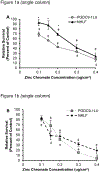

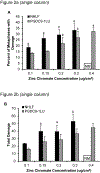

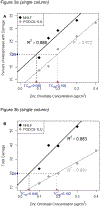


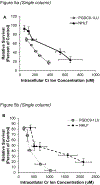

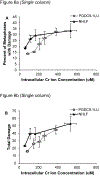



Similar articles
-
The cytotoxicity and genotoxicity of particulate and soluble hexavalent chromium in leatherback sea turtle lung cells.Aquat Toxicol. 2018 May;198:149-157. doi: 10.1016/j.aquatox.2018.03.003. Epub 2018 Mar 4. Aquat Toxicol. 2018. PMID: 29547730 Free PMC article.
-
Hexavalent chromium is cytotoxic and genotoxic to hawksbill sea turtle cells.Toxicol Appl Pharmacol. 2014 Sep 1;279(2):113-8. doi: 10.1016/j.taap.2014.06.008. Epub 2014 Jun 19. Toxicol Appl Pharmacol. 2014. PMID: 24952338 Free PMC article.
-
Comparative cytotoxicity and genotoxicity of soluble and particulate hexavalent chromium in human and hawksbill sea turtle (Eretmochelys imbricata) skin cells.Comp Biochem Physiol C Toxicol Pharmacol. 2015 Dec;178:145-155. doi: 10.1016/j.cbpc.2015.09.013. Epub 2015 Oct 9. Comp Biochem Physiol C Toxicol Pharmacol. 2015. PMID: 26440299 Free PMC article.
-
Assessment of the mode of action for hexavalent chromium-induced lung cancer following inhalation exposures.Toxicology. 2014 Nov 5;325:160-79. doi: 10.1016/j.tox.2014.08.009. Epub 2014 Aug 28. Toxicology. 2014. PMID: 25174529 Review.
-
Complexities of chromium carcinogenesis: role of cellular response, repair and recovery mechanisms.Mutat Res. 2003 Dec 10;533(1-2):3-36. doi: 10.1016/j.mrfmmm.2003.09.006. Mutat Res. 2003. PMID: 14643411 Review.
Cited by
-
Carcinogenic Mechanisms of Hexavalent Chromium: From DNA Breaks to Chromosome Instability and Neoplastic Transformation.Curr Environ Health Rep. 2024 Dec;11(4):484-546. doi: 10.1007/s40572-024-00460-9. Epub 2024 Oct 28. Curr Environ Health Rep. 2024. PMID: 39466546 Review.
-
Heavy Metal Concentrations of Beeswax (Apis mellifera L.) at Different Ages.Bull Environ Contam Toxicol. 2023 Aug 20;111(3):26. doi: 10.1007/s00128-023-03779-5. Bull Environ Contam Toxicol. 2023. PMID: 37598395 Free PMC article.
-
Prolonged particulate hexavalent chromium exposure induces RAD51 foci inhibition and cytoplasmic accumulation in immortalized and primary human lung bronchial epithelial cells.Toxicol Appl Pharmacol. 2023 Nov 15;479:116711. doi: 10.1016/j.taap.2023.116711. Epub 2023 Oct 5. Toxicol Appl Pharmacol. 2023. PMID: 37805091 Free PMC article.
-
Chromate Affects Gene Expression and DNA Methylation in Long-Term In Vitro Experiments in A549 Cells.Int J Mol Sci. 2024 Sep 20;25(18):10129. doi: 10.3390/ijms251810129. Int J Mol Sci. 2024. PMID: 39337613 Free PMC article.
-
Global challenges in aging: insights from comparative biology and one health.Front Toxicol. 2024 May 30;6:1381178. doi: 10.3389/ftox.2024.1381178. eCollection 2024. Front Toxicol. 2024. PMID: 38873623 Free PMC article. Review.
References
-
- Aguirre AA, Tabor GM, 2004. Introduction: Marine vertebrates as sentinels of marine ecosystem health. EcoHealth. 1: 236–238. DOI: 10.1007/s10393-004-0091-9. - DOI
-
- Archibald DW, James MC, 2016. Evaluating inter-annual relative abundance of leatherback sea turtles in Atlantic Canada. Marine Ecology, 547: 233–246.
-
- Bickler PE, and Buck LT 2007. Hypoxia tolerance in reptiles, amphibians, and fishes: life with variable oxygen availability. Annu. Rev. Physiol 69, 145–170. - PubMed
Publication types
MeSH terms
Substances
Grants and funding
LinkOut - more resources
Full Text Sources
Medical

